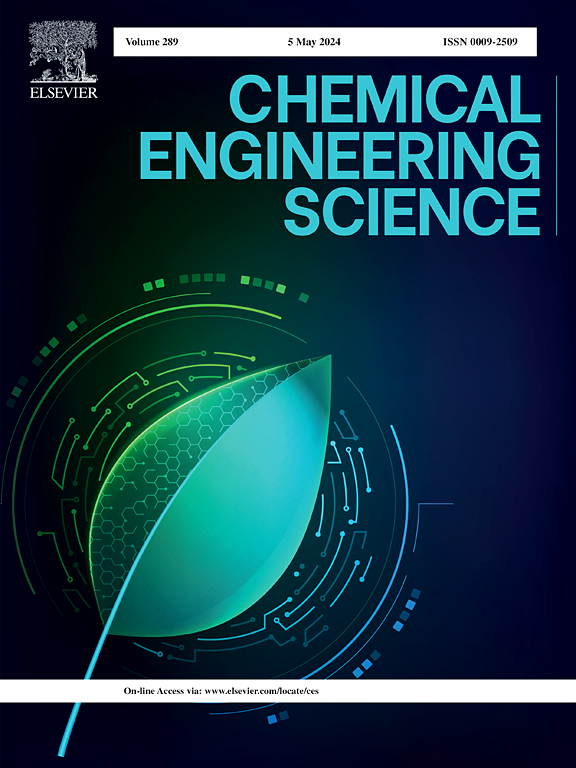Impact of the non-uniform particle size on conversion in fluid–solid reactions with shrinking-core type kinetics
IF 4.3
2区 工程技术
Q2 ENGINEERING, CHEMICAL
引用次数: 0
Abstract
The impact of non-uniform particle size on conversion in fluid–solid reactions with shrinking-core kinetics was investigated in the present work. Classical conversion-time equations for film, ash, and chemical reaction control regimes were extended to systems of solid spheres with log-normal particle size distribution (PSD). This PSD is described by the harmonic mean radius and a dispersion parameter that reflects the deviation regarding uniform size. For every controlling regime, small particles exhibit rapid conversion, while larger particles demand longer reaction times. Hence, overall conversion can be calculated as the result of the contribution of the conversion of each particle size weighted by the proportion of that size over the whole distribution. A characteristic reaction time is defined analogously to systems with uniform-sized particles but based on the harmonic mean radius of the PSD. Thus, conversion-dimensionless time curves for uniform and non-uniform sizes coincide at low reaction times but deviate significantly at higher conversions, with lower values of conversions as the dispersion in the PSD increases. These discrepancies negatively affect the reactor design if the dispersion in the particle sizes is ignored. A simple algebraic equation, capable of relating the conversion to the dimensionless reaction time and the dispersion in the particle size distribution for all controlling regimes, was proposed. This formula enables accurate estimation of conversions or dimensionless reaction times, thus providing a practical tool for reactor design or assisting the first steps of optimization algorithms when fluid–solid reactors are fed with solids having variable ranges of particle sizes.
粒径不均匀对收缩核型流固反应转化的影响
本文研究了颗粒尺寸不均匀对缩核流固反应转化的影响。将薄膜、灰分和化学反应控制体系的经典转换时间方程推广到具有对数正态粒径分布(PSD)的固体球系统。该PSD由谐波平均半径和色散参数描述,色散参数反映了均匀尺寸的偏差。对于每一种控制制度,小颗粒表现出快速的转化,而大颗粒需要更长的反应时间。因此,总转化率可以计算为每个粒径的转化率的贡献的结果,该贡献由该粒径在整个分布中的比例加权。特征反应时间的定义类似于具有均匀大小粒子的系统,但基于PSD的调和平均半径。因此,均匀和非均匀尺寸的转换无量纲时间曲线在低反应时间时重合,但在高转换时间时显著偏离,随着PSD中色散的增加,转换值降低。如果忽略颗粒尺寸的分散,这些差异会对反应器设计产生负面影响。提出了一个简单的代数方程,能够将转换与无因次反应时间和粒径分布中的分散联系起来。该公式能够准确估计转换或无量纲反应时间,从而为反应器设计提供实用工具,或在流固反应器中添加具有可变粒径范围的固体时协助优化算法的第一步
本文章由计算机程序翻译,如有差异,请以英文原文为准。
求助全文
约1分钟内获得全文
求助全文
来源期刊

Chemical Engineering Science
工程技术-工程:化工
CiteScore
7.50
自引率
8.50%
发文量
1025
审稿时长
50 days
期刊介绍:
Chemical engineering enables the transformation of natural resources and energy into useful products for society. It draws on and applies natural sciences, mathematics and economics, and has developed fundamental engineering science that underpins the discipline.
Chemical Engineering Science (CES) has been publishing papers on the fundamentals of chemical engineering since 1951. CES is the platform where the most significant advances in the discipline have ever since been published. Chemical Engineering Science has accompanied and sustained chemical engineering through its development into the vibrant and broad scientific discipline it is today.
 求助内容:
求助内容: 应助结果提醒方式:
应助结果提醒方式:


